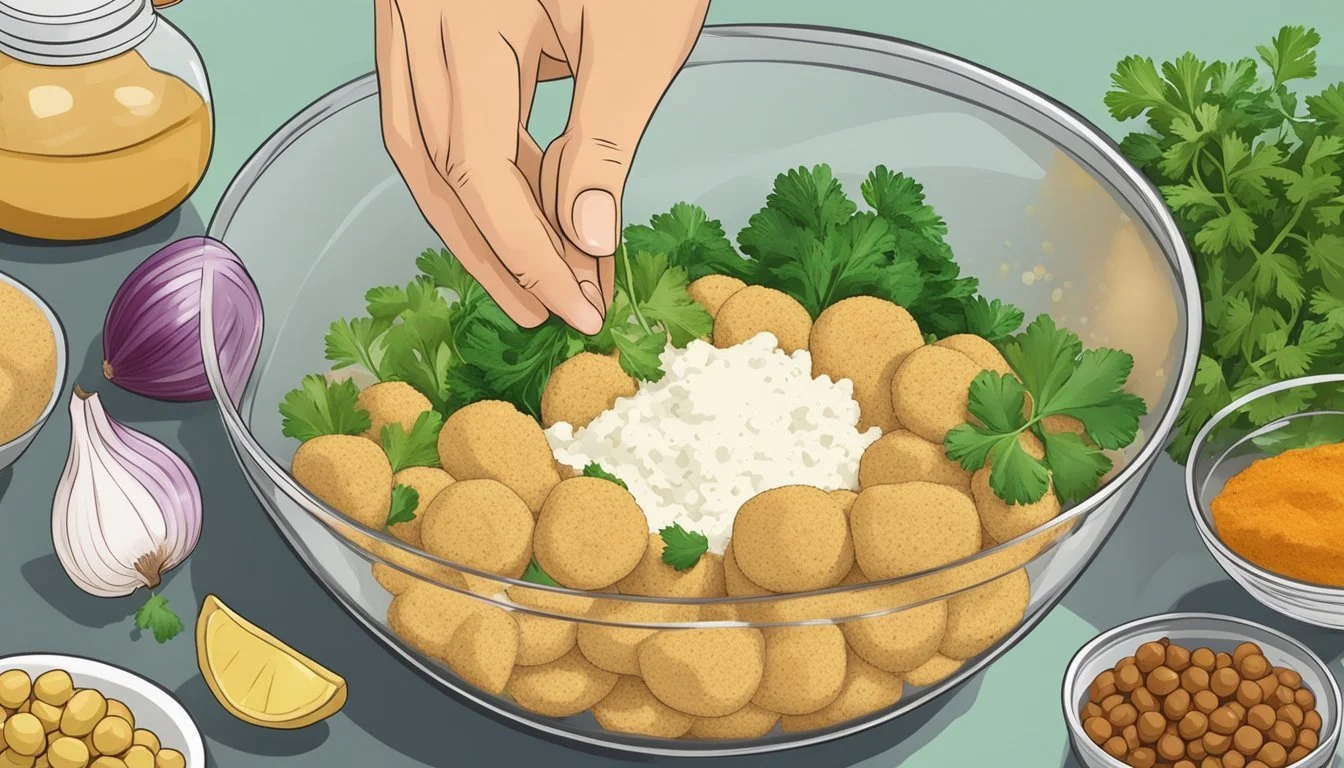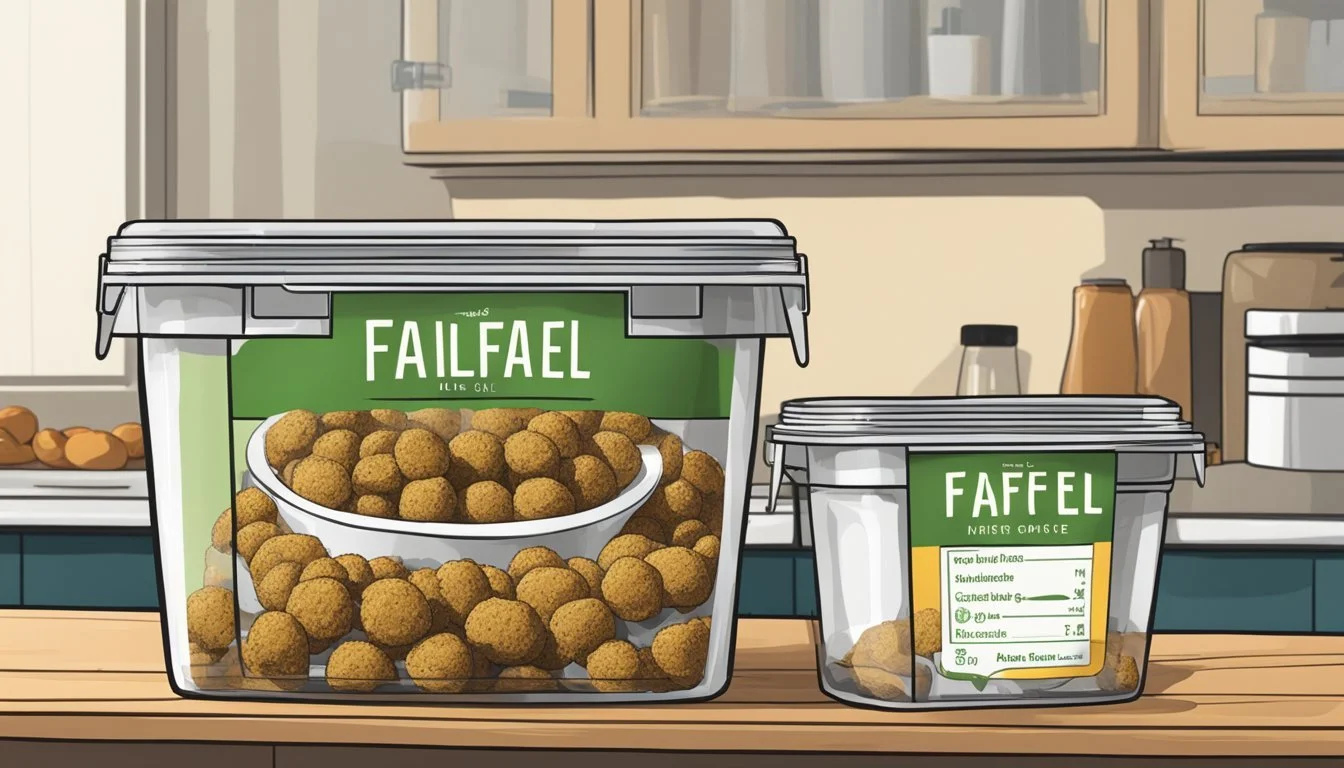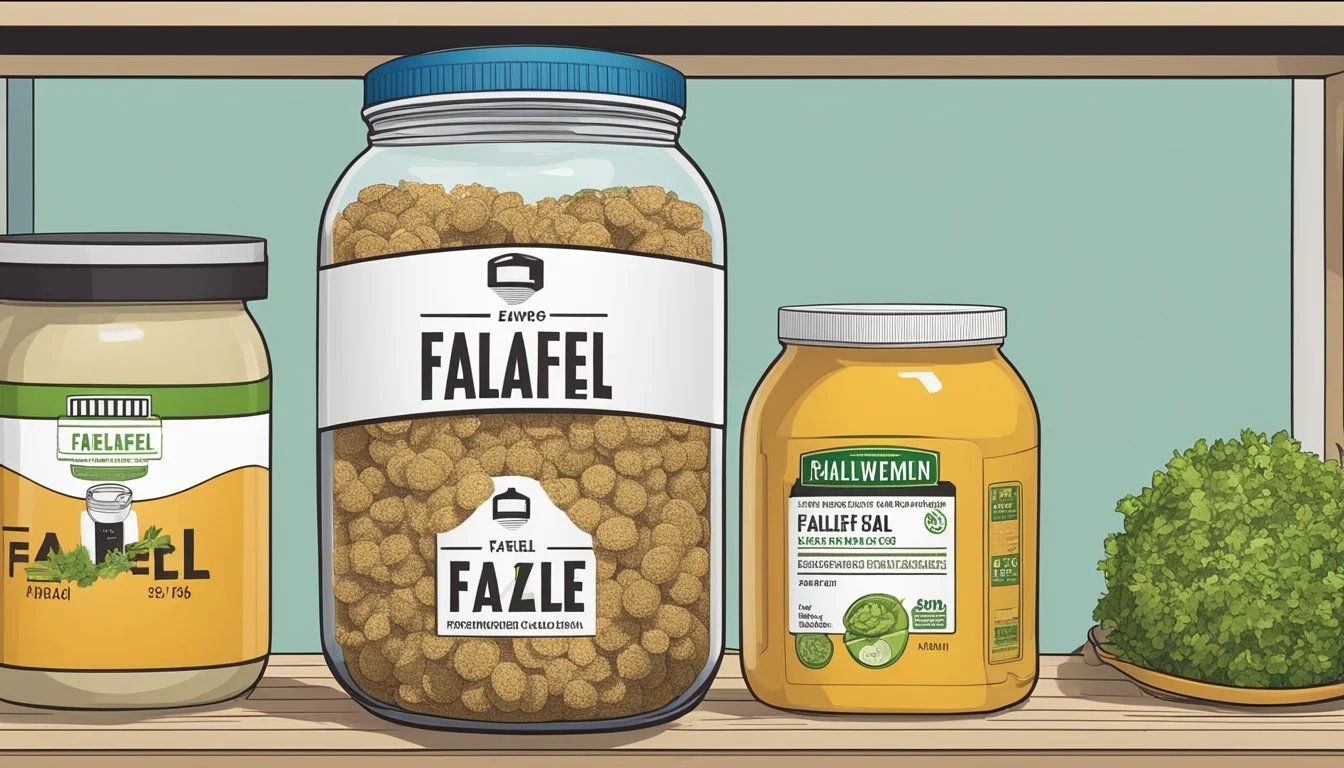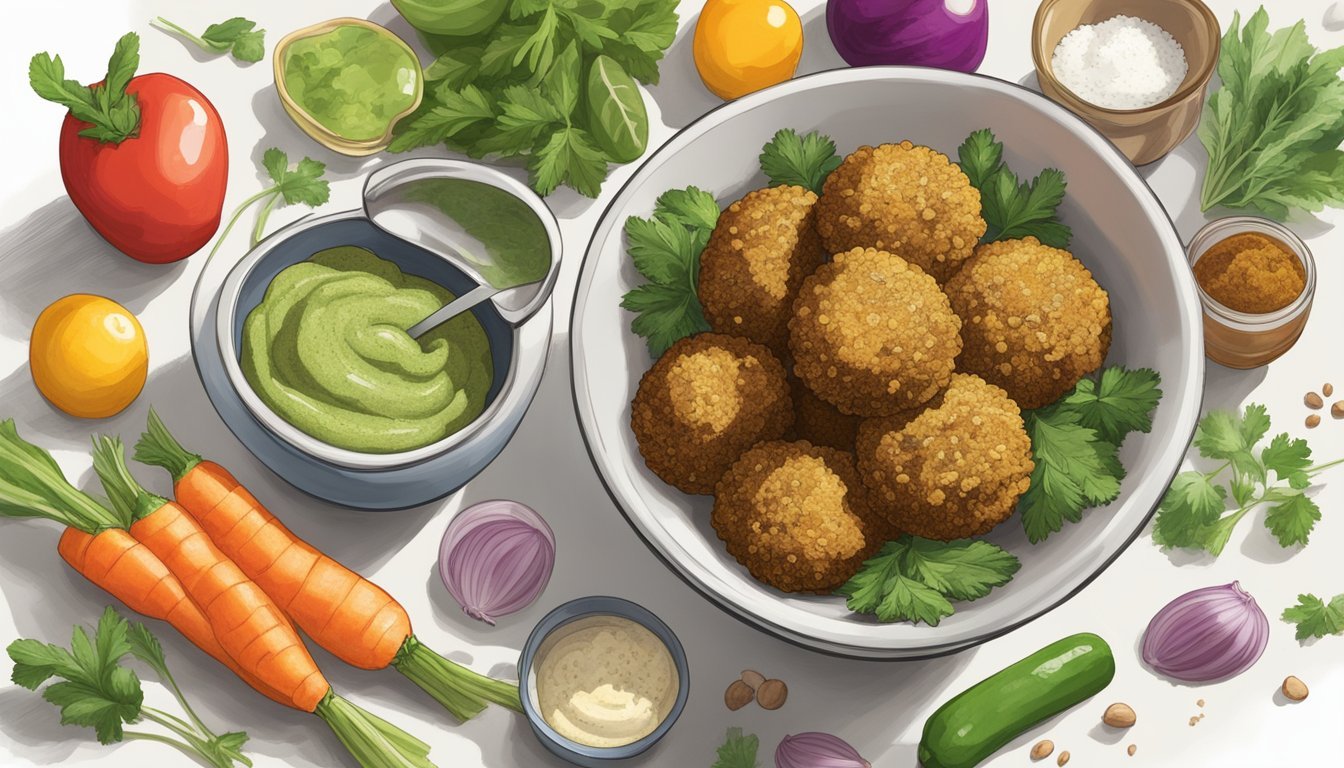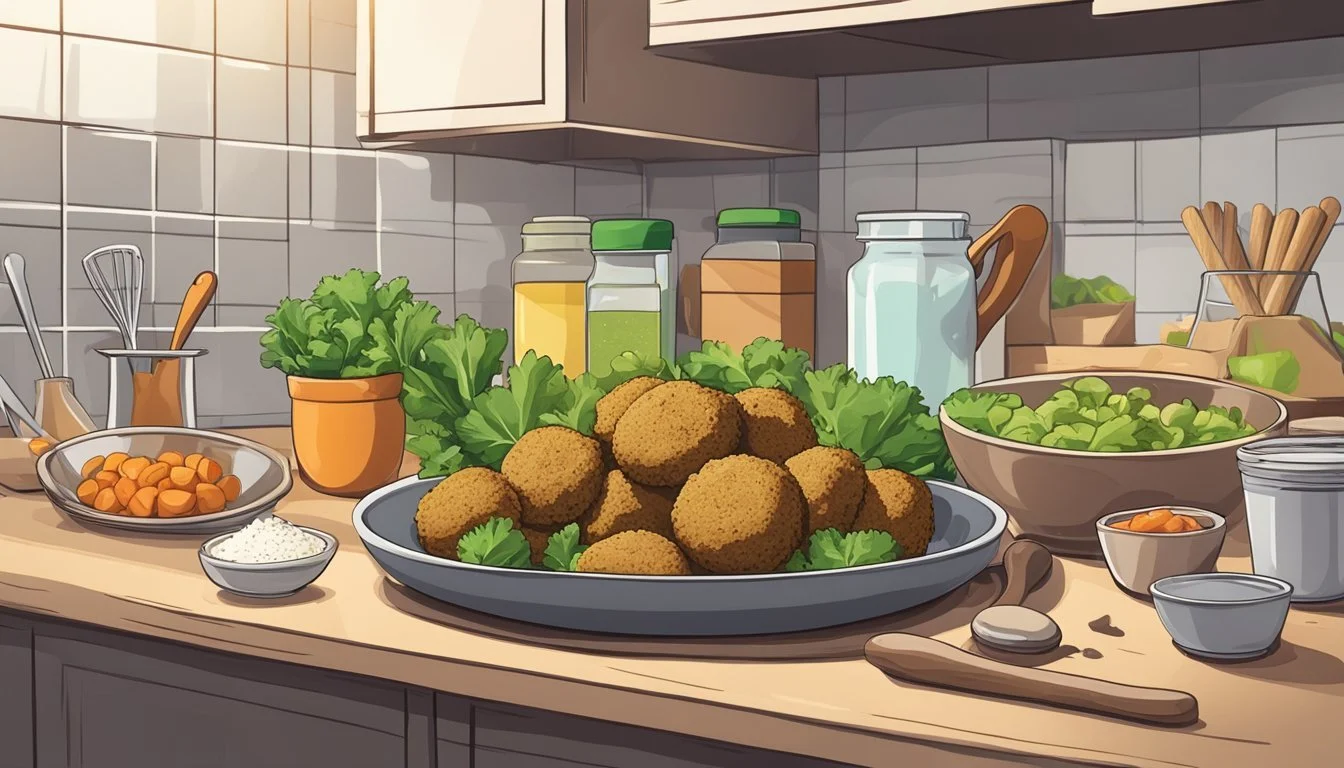How Long Does Falafel Mix Last?
Shelf Life and Storage Tips
Falafel, a Middle Eastern delicacy, has become a global favorite, known for its herby, spiced chickpea batter that's formed into balls or patties and deep-fried to a delectable crispiness. But for those who enjoy making falafel at home, understanding how to store the mix properly is crucial for both safety and flavor. Uncooked falafel mix consists of ingredients like ground chickpeas, onions, herbs, and spices, which can be sensitive to spoilage if not stored correctly.
To ensure the best quality and safety, an uncooked falafel mix should be stored in the refrigerator. When kept at a consistent, cool temperature, the mix can generally remain fresh for up to four days. It's recommended to store the mix in a covered container to prevent contamination and maintain freshness.
For cooked falafel, keeping them in the refrigerator short-term is also advised as it helps retain their crisp coating. Freshly cooked falafel provides the best taste and texture, thus, reheating or cooking stored mix right before serving is favorable for an enjoyable eating experience. While it's tempting to prepare large quantities, considering the mix's shelf life can help minimize waste and ensure every batch is as delicious as intended.
Understanding Falafel
Falafel is a traditional Middle Eastern food often served in pita bread as a sandwich or as part of a mezze platter. Recognized for its high protein content, falafel is a favorite among those following a vegan or vegetarian diet. The primary ingredient in falafel is chickpeas or fava beans, (how long do fava beans last?) though a combination of both can also be used.
The process of making falafel involves grinding the beans into a mix or mixture, then adding a blend of spices which may include cumin, coriander, garlic, parsley, and cilantro (how long does cilantro last?). This mixture is then shaped into patties or balls and deep-fried to create a crispy outer layer with a soft interior.
Chickpeas are the more popular base for falafel and are known for their versatility and nutrient density. In addition to protein, they provide dietary fiber, vitamins, and minerals. For those looking to incorporate plant-based protein sources in their diet, falafel is a strong option.
As falafel has grown in popularity, it has transcended its origins and is now a familiar food across the globe. Its appeal lies in the combination of its savory flavor, the contrasting textures, and its compatibility with a variety of diets. The adaptability of the basic falafel mix allows for different interpretations, enabling chefs to add personal touches while staying true to the essence of the dish.
Falafel Mix Ingredients
Falafel mix consists of a balanced blend of legumes, aromatics, herbs, spices, and binding agents, each contributing to the taste, texture, and cohesiveness of the final product.
Chickpeas and Fava Beans
Falafel mix primarily includes chickpeas and/or fava beans as its base. These legumes are often soaked and then ground to create the foundation of the mix, providing protein and a hearty texture.
Onions and Garlic
Onions and garlic are key aromatic ingredients. They are typically minced finely and added to the ground legumes for a depth of flavor. Onions add sweetness and garlic contributes its distinct pungent taste.
Herbs Selection
Herbal freshness comes from parsley which is a staple in traditional falafel mixes. It imparts a bright green color and fresh taste. Some variations might also include cilantro for a different dimension of flavor.
Spices for Flavor
Spices such as cumin and coriander are integral for an authentic falafel taste, providing earthy and lemony notes respectively. Additional seasonings like salt and black pepper are used for enhancing the overall flavor profile.
Binding Agents
To ensure the mix holds together when formed into balls or patties, baking soda or baking powder are used as binding agents. These ingredients also contribute to a lighter texture by creating air pockets within the falafel when cooked.
Preparing Falafel Mix
When preparing falafel mix, the key factors include the initial mixing process, the soaking of the legumes to achieve the right texture, and finally, shaping the mixture into balls.
Mixing Process
The falafel mix involves combining dry chickpeas with aromatic herbs and spices. Starting with chickpeas is preferred, although fava beans can also be used. Herbs such as parsley and cilantro bring freshness, while spices like cumin and coriander seed add depth of flavor. It's essential to mix these ingredients thoroughly to ensure each falafel ball is uniformly seasoned.
Soaking and Texture
For the optimal texture, chickpeas must be soaked -- usually overnight. This is because:
Soaking Time: At least 8 to 12 hours
Texture: Soaked chickpeas prevent the falafel from being too dense and ensure a crisp exterior with a tender middle when cooked.
Chickpeas should never be cooked prior to mixing, as this would result in a soggy texture unsuitable for frying.
Shaping Falafel Balls
After the falafel mixture has been properly prepared, it should be shaped into small balls or patties. This can be done by hand or with the help of a falafel scoop, which helps ensure consistent size and shape. It's important that the balls are:
Compact: Firm enough to hold together during frying.
Uniform: Similar in size for even cooking.
The mixture should be processed until it's fine enough to stick together when pressed, yet coarse enough to provide texture.
Cooking Techniques
When one prepares falafel, the cooking technique employed can greatly influence the texture and flavor. Achieving a crispy exterior and tender interior is paramount, and several methods can be used to cook falafel to perfection, including frying, baking, and using an air fryer.
Frying for Crispiness
The traditional method for cooking falafel involves deep frying in oil. This technique is favored for creating that characteristic golden brown and crispy texture. The oil should be heated to a high temperature, typically between 350°F (177°C) and 375°F (191°C), before adding the falafel. It's crucial to fry in small batches to ensure each ball cooks evenly and achieves a crunchy exterior without becoming greasy.
Baking as an Alternative
Baking falafel offers a less oily alternative to deep frying and can be a healthier option. Preheat the oven to around 375°F (191°C) and lightly oil a baking sheet. Arrange the falafel balls on the sheet and brush them with oil to facilitate browning. Bake for approximately 25-30 minutes, flipping halfway through, until they are golden brown. Baking may not produce the same level of crispiness as deep frying but can still yield a satisfying texture.
Using an Air Fryer
An air fryer is an effective appliance for making falafel that are crispy with minimal oil. Preheat the air fryer to approximately 375°F (191°C), place the falafel in the basket in a single layer, and cook for about 15-20 minutes. The circulated hot air in the fryer ensures that the falafel turn out crispy on the outside while remaining tender inside, similar to deep-fried, but with significantly less oil.
Storing Uncooked Falafel
Proper storage of uncooked falafel mix is essential for maintaining its freshness and preventing spoilage. The mix can be susceptible to bacterial growth if not stored correctly.
Refrigeration Guidelines
Uncooked falafel mix should be stored in the refrigerator to keep it safe for consumption. Once placed in an airtight container, the mix can typically be refrigerated for three to four days. It’s important to note that storing the falafel mix beyond this period can increase the risk of it becoming unsafe to eat.
Storage Time: Up to 4 days
Container: Airtight
Temperature: Keep refrigerated
Freezing for Longevity
For long-term storage, freezing the falafel mix is the best option. The uncooked mix should be portioned into the desired sizes and then placed in the freezer. When stored properly in an airtight container or a freezer-safe bag, the mix can be kept safe and retain quality for several months.
Method: Freeze in portions
Container: Airtight or freezer-safe bag
Storage Time: Several months (quality may diminish over time)
Shelf-Life of Cooked Falafel
When it comes to the shelf-life of cooked falafel, its longevity is dependent on proper storage methods. Keeping it fresh involves refrigeration or freezing, each method affecting the duration falafel remains edible and enjoyable.
Refrigerator Storage
Cooked Falafel Shelf-Life:
In the Refrigerator: Typically, cooked falafel retains its quality for up to 3 to 4 days when stored properly in the refrigerator.
Storage Tips:
Cooked falafel must be placed in the refrigerator within two hours of cooking to prevent spoilage.
Utilize an airtight container to maintain freshness and prevent contamination.
For optimal taste, consume refrigerated falafel within the mentioned timeframe.
Freezing and Reheating
Cooked Falafel Shelf-Life:
When Frozen: Cooked falafel can be stored in the freezer, extending its shelf-life to several months.
How to Freeze:
Ensure falafel is cooled completely before transferring it to a freezer-safe bag or container.
Remove as much air as possible to prevent freezer burn.
Reheating Frozen Falafel:
Reheat thawed or frozen falafel in an oven or on the stovetop until it reaches a safe internal temperature.
For the best quality, avoid microwaving as it may affect the texture.
Factors Affecting Shelf-Life
Shelf-life of falafel mix is primarily influenced by moisture and temperature, as both can significantly impact microbial growth and spoilage.
Moisture and Spoilage
The presence of moisture in falafel mix can accelerate spoilage; excess moisture facilitates the growth of bacteria and mold. A dryer mix will last longer, as it is less hospitable to these microorganisms. It's crucial to store falafel mix in a dry environment to minimize moisture exposure and extend its shelf-life.
Temperature and Microbial Growth
Temperature plays a crucial role in the shelf-life of falafel mix. Storing the mix at room temperature can lead to rapid microbial growth, potentially causing spoilage. Refrigerating falafel mix below 40°F (4°C) reduces bacterial activity, thus prolonging its usability. It is generally recommended to store falafel mix in the refrigerator to slow down any growth of bacteria and mold.
Serving and Presentation
Presentation elevates the falafel experience, enhancing both visual appeal and flavor. The focus on appropriate accompaniments and traditional Mediterranean contexts ensures a satisfying falafel meal.
Accompaniments and Dips
Falafel is traditionally served with a variety of accompaniments and dips that complement its flavors. A salad consisting of fresh greens, tomatoes, cucumbers, and pickles offers a crisp and refreshing contrast to the falafel's crunch.
Tahini sauce, a creamy sesame-based condiment, is drizzled over falafel for a rich and nutty flavor enhancement.
Hummus, a smooth chickpea spread, pairs well with falafel, adding creaminess and depth with its garlic and lemon notes.
These sides and dips not only add a burst of flavor but also provide a visually appealing array of colors and textures on the plate.
Falafel in Mediterranean Cuisine
In the context of Mediterranean cuisine, falafel is often featured in several popular dishes:
Pita Bread: Falafel balls are commonly stuffed inside pita bread along with veggies and sauces to create a hearty sandwich.
Wrap: Alternatively, falafel can be wrapped in a flatbread with salad and tahini or yogurt-based sauces for a convenient, on-the-go meal.
Whether served on a platter as part of a mezze or as the star of a falafel wrap, the key to an authentic Mediterranean falafel experience lies in the freshness of the ingredients and the harmony of flavors between the falafel and its accompaniments.
Tips for Best Quality Falafel
Achieving the best quality falafel is rooted in the choice of ingredients and the methods of cooking. Ensuring freshness and the right texture can elevate a homemade falafel recipe from good to authentic and delicious.
Selecting Quality Ingredients
Chickpeas: Opt for dried chickpeas rather than canned, as they are the foundation of falafel and ensure a firmer texture and purer flavor.
Herbs and Spices:
Fresh herbs such as coriander, parsley, and cilantro must be fresh to achieve that vibrant flavor.
Garlic cloves: Fresh garlic will support the depth of taste.
Spices like cumin, cayenne pepper, and coriander should be well-measured to maintain an authentic and slightly spicy profile.
Cooking Methods
Deep Frying: For that perfect crispy exterior and tender middle, falafel should be cooked by deep frying in oil at the correct temperature.
Baking (alternative method): For a healthier option, baking is acceptable but may not yield the traditional texture associated with fried falafel.
By focusing on quality ingredients like fresh herbs and dried chickpeas and using the proper cooking techniques, falafel can be made with a taste and texture that is both flavorful and authentic.
Health and Safety Considerations
When dealing with falafel mix, it is crucial to prioritize health and safety by understanding proper handling, cooking, and storage methods, as well as recognizing signs of spoilage to prevent foodborne illness.
Handling and Cooking Safety
Before cooking or handling falafel mix, one should always wash their hands to minimize the risk of bacterial contamination. When preparing the mix for cooking, a food thermometer can be used to ensure that the falafel has reached a safe internal temperature of 165°F (74°C) to kill any potential harmful bacteria. It is advised to cook only what can be consumed in one sitting, as repeated reheating of falafel can further increase the risk of foodborne illnesses.
Cooking falafel to the right temperature is crucial: Aim for an internal temperature of at least 165°F.
Handle with clean hands: To prevent contamination, clean hands are essential when handling falafel mix.
Identifying Spoiled Falafel
Spoiled falafel mix is typically identifiable by an off or sour smell, mold growth, or any slimy texture on the mix. These are indicators that the mix should be discarded immediately to ensure safety. Consuming spoiled falafel can lead to food poisoning as bacteria like Salmonella or E. coli may have developed.
Smell: Trust your nose – if the falafel mix smells off, it's best to throw it out.
Visual inspection for mold: Look for any spots of mold or changes in color that indicate spoilage.
Additional Falafel Insights
When preparing falafel, the quest for the ideal texture—a crispy exterior with a fluffy interior—is paramount. Achieving a golden brown crust typically involves either frying or baking. Frying in oil is traditional in Middle Eastern cuisine and tends to impart a more pronounced crispiness to the falafel.
In terms of ingredients, many falafel enthusiasts advocate for making the mix from scratch using dried chickpeas, which should be soaked overnight. This offers a more authentic taste compared to using canned chickpeas. The soaked chickpeas are then blended, most effectively in a food processor, with herbs, spices, and sometimes sesame seeds (how long do sesame seeds last?), to add a subtle nuttiness.
Here's a quick guide on how to cook falafel:
Fry: Heat oil in a deep fryer or pan to 350°F (175°C). Form the mix into balls or patties and fry until each is well-browned and crispy.
Bake: Preheat the oven to 375°F (190°C), place falafel on a baking sheet, and bake until they are firm to the touch and have attained a light golden color.
Falafel is not just a Middle Eastern staple; it has become a global favorite and can be complex or simplified, depending on whether it's made from scratch or from a ready-made mix. No matter the method, achieving the quintessential crispy texture is essential, and whether one opts to fry or bake, careful attention should be given to not overcooking, maintaining enough oil heat, and avoiding overcrowding in the pan or oven, ensuring each piece cooks evenly.
Conclusion
When storing falafel mix, the lifespan varies depending on its state and storage conditions. An unopened dried falafel mix, kept in a cool, dry place, typically has a longer shelf life. Once opened, it's recommended to use it within a few months for optimal taste and quality, although it may remain safe to consume beyond that time frame if properly stored.
Fresh falafel mix, or one made from scratch, requires refrigeration and should be used relatively quickly. Cooked falafel also needs refrigeration and is best enjoyed within four days to maintain both safety and quality.
For those who have leftovers or want to prepare in advance, freezing is a practical option. Here's a simplified table for quick reference on falafel mix shelf life:
State of Falafel Mix Recommended Storage Time Dried Falafel Mix (Unopened) Several Months Dried Falafel Mix (Opened) Few Months Fresh/Scratch Falafel Mix 1-2 Days (Refrigerated) Cooked Falafel 4 Days (Refrigerated) Frozen (Fresh or Cooked Mix) Several Months
Remember that these guidelines assume the mix is stored in the correct conditions. Always check for any signs of spoilage, such as off smells, discoloration, or mold, before consumption. Safe food practices ensure that your falafel remains delicious and safe to consume.




